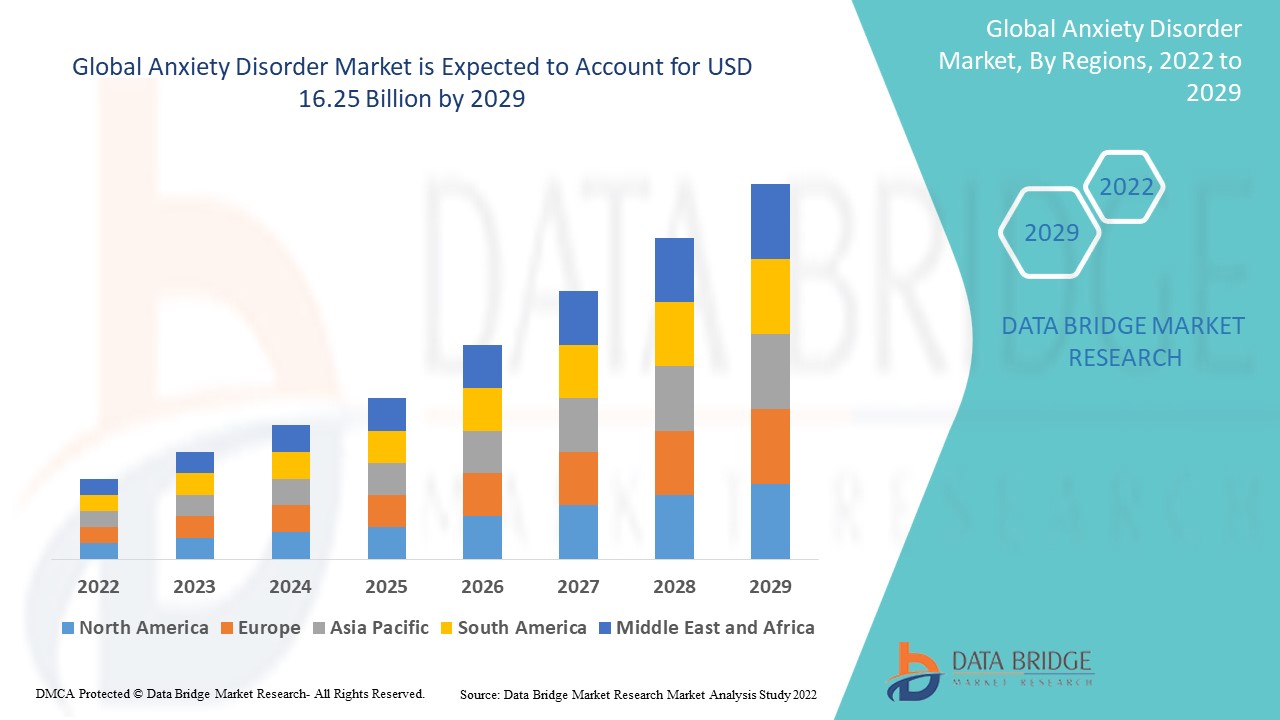
Anxiety Disorder Market Sector Insights: Market Distribution, Scale, Developments, Forecast, and Industry Snapshot
Executive Summary Anxiety Disorder Market :
Data Bridge Market Research analyses a growth rate in the global anxiety disorder market in the forecast period 2022-2029. The expected CAGR of global anxiety disorder market is tend to be around 5% in the mentioned forecast period.
The high quality Anxiety Disorder Market report not only takes into consideration all the market drivers and restraints which are derived from SWOT analysis but also gives all the CAGR projections. This market report underlines the specific study of the industry which explains what the market definition, classifications, applications, engagements, and global industry trends are. This market research report emphasizes on the global key manufacturers to define, illustrate and analyze the market competition landscape using SWOT analysis. Anxiety Disorder Market business report makes to focus on the vital aspects of the market such as recent market trends and market conditions.

Several market analysis factors covered in the credible Anxiety Disorder Market report include industry outlook with respect to critical success factors (CSFs), industry dynamics that mainly covers drivers and restraints, market segmentation & value chain analysis, key opportunities, application and technology outlook, regional or geographical insight, country-level analysis, key company profiles, competitive landscape, and company market share analysis. Thus, this market research report provides comprehensive analysis on the study of industry with respect to number of aspects. Anxiety Disorder Market report is a valuable source of assistance for companies and individuals that provides industry chain structure, business strategies and proposals for new project investments.
Discover the latest trends, growth opportunities, and strategic insights in our comprehensive Anxiety Disorder Market report. Download Full Report: https://www.databridgemarketresearch.com/reports/global-anxiety-disorder-market
Anxiety Disorder Market Overview
Overall, the global anxiety disorder market is witnessing significant growth due to the increasing prevalence of anxiety disorders worldwide. Factors such as rising awareness about mental health, advancements in treatment options, and a growing emphasis on early diagnosis are driving the market forward. The market segmentation based on type, end users, and treatment provides a comprehensive understanding of the industry landscape, enabling stakeholders to tailor their strategies accordingly. Key market players like Pfizer Inc., Johnson & Johnson, and Eli Lilly and Company play a crucial role in shaping the market dynamics through their innovative products and services. Collaboration, research, and development efforts by these leading companies are expected to further fuel market growth in the coming years.
The global anxiety disorder market is poised for significant growth in the coming years, driven by various factors that are shaping the industry landscape. One aspect that could potentially impact the market is the increasing focus on personalized medicine and precision healthcare. As advancements in technology continue to evolve, there is a growing trend towards tailoring treatments based on individual patient characteristics, including genetic makeup, lifestyle factors, and biometric data. This shift towards precision medicine in the field of mental health could lead to more targeted and effective therapies for anxiety disorders, ultimately improving patient outcomes and satisfaction.
Moreover, the integration of digital health solutions and telemedicine services is revolutionizing the way anxiety disorders are diagnosed and managed. With the rise of telehealth platforms and mobile health apps, patients now have increased access to mental health resources and support, enabling remote monitoring, therapy sessions, and real-time feedback. This virtual care model not only enhances convenience for patients but also helps bridge the gap in mental health services, particularly in underserved regions where access to traditional healthcare facilities may be limited.